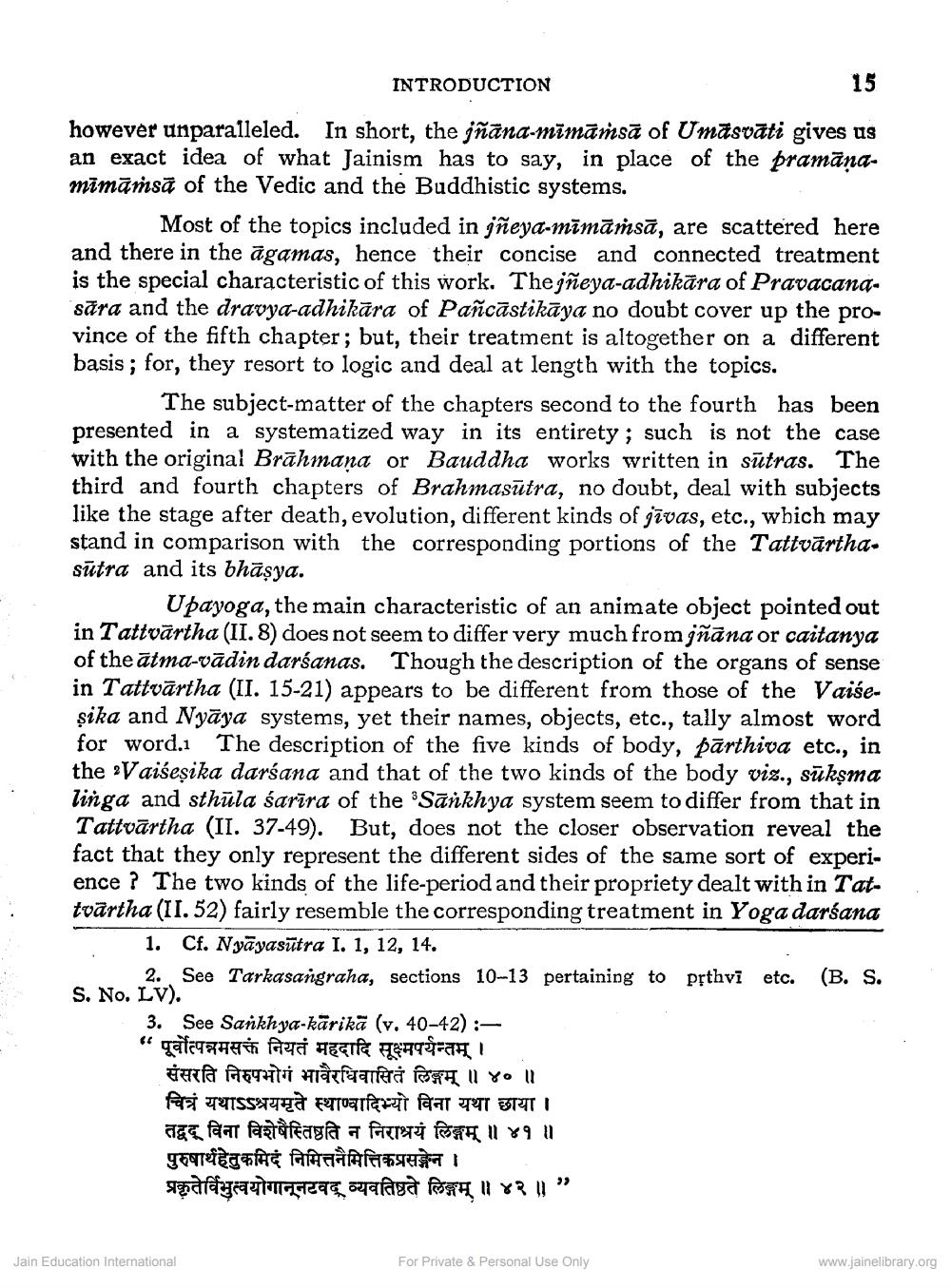________________
INTRODUCTION
15
however unparalleled. In short, the jñāna-mīmāṁsā of Umāsvāti gives us
xact idea of what Jainism has to say, in place of the pramānamīmāṁsā of the Vedic and the Buddhistic systems.
Most of the topics included in jñeya-mīmāṁsā, are scattered here and there in the āgamas, hence their concise and connected treatment is the special characteristic of this work. The jñeya-adhikāra of Pravacana. sāra and the dravya-adhikāra of Pañcāstikāya no doubt cover up the province of the fifth chapter; but, their treatment is altogether on a different basis ; for, they resort to logic and deal at length with the topics.
The subject matter of the chapters second to the fourth has been presented in a systematized way in its entirety ; such is not the with the original Brāhmana or Bauddha works written in sūtras. The third and fourth chapters of Brahmasutra, no doubt, deal with subjects like the stage after death, evolution, different kinds of jīvas, etc., which may stand in comparison with the corresponding portions of the Tattvārthasūtra and its bhāșya.
Upayoga, the main characteristic of an animate object pointed out in Tattvārtha (II.8) does not seem to differ very much from jñāna or caitanya of the ātma-vādin darśanas. Though the description of the organs of sense in Tattvārtha (II. 15-21) appears to be different from those of the Vaiseșika and Nyāya systems, yet their names, objects, etc., tally almost word for word.1 The description of the five kinds of body, pārthiva etc., in the Vaišesika darśana and that of the two kinds of the body viz., sūksma linga and sthūla śarīra of the Sankhya system seem to differ from that in Tattvārtha (II. 37-49). But, does not the closer observation reveal the fact that they only represent the different sides of the same sort of experience ? The two kinds of the life-period and their propriety dealt with in Tattvārtha (II. 52) fairly resemble the corresponding treatment in Yoga
1. Cf. Nyāyasūtra I. 1, 12, 14.
2... See Tarkasangraha, sections 10-13 pertaining to přthvi etc. (B. S. S. No. LV).
3. See Sankhya-kārikā (v. 40-42): " पूर्वोत्पन्नमसक्तं नियतं महदादि सूक्ष्मपर्यन्तम् ।
संसरति निरुपभोगं भावैरधिवासित लिङ्गम् ॥ ४० ॥ चित्रं यथाऽश्रयमृते स्थाण्वादिभ्यो विना यथा छाया । तद्वद् विना विशेषैस्तिष्ठति न निराश्रयं लिङ्गम् ॥ ४१ ॥ पुरुषार्थहेतुकमिदं निमित्तनैमित्तिकप्रसङ्गेन । प्रकृतेर्विभुत्वयोगानूनटवद् व्यवतिष्ठते लिङ्गम् ॥ ४२॥"
Jain Education International
For Private & Personal Use Only
www.jainelibrary.org




